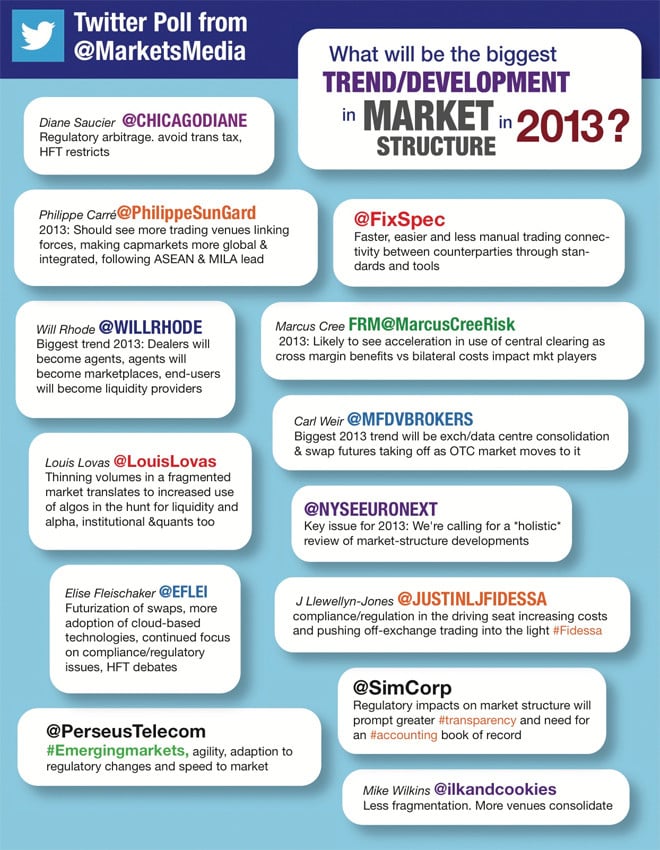Regulatory arbitrage. avoid trans tax, HFT restricts.
— Diane Saucier (@ChicagoDiane)
2013: Likely to see acceleration in use of central clearing as cross margin benefits vs bilateral costs impact mkt players
— Philippe Carré (@PhilippeSunGard )
Faster, easier and less manual trading connectivity between counterparties through standards and tools.
— FixSpec (@FixSpec )
Biggest trend 2013: Dealers will become agents, agents will become marketplaces, end-users will become liquidity providers.
— Will Rhode (@willrhode )
2013: Likely to see acceleration in use of central clearing as cross margin benefits vs bilateral costs impact mkt players
— Marcus Cree FRM (@MarcusCreeRisk )
Thinning volumes in a fragmented market translates to increased use of algos in the hunt for liquidity and alpha, institutional & quants too
— Louis Lovas (@LouisLovas )
Biggest 2013 trend will be exch/data centre consolidation & swap futures taking off as OTC market moves to it
— Carl Weir (@MFDVbrokers )
Key issue for 2013: We're calling for a *holistic* review of market-structure developments
— (NYX) NYSE Euronext (@NYSEEuronext)
Futurization of swaps, more adoption of cloud-based technologies, continued focus on compliance/regulatory issues, HFT debates
— Elise Fleischaker (@EFlei )
compliance/regulation in the driving seat increasing costs and pushing off-exchange trading into the light
— J Llewellyn-Jones (@JustinLJFidessa )
#Emergingmarkets, agility, adaption to regulatory changes and speed to market
— Perseus Telecom ( @PerseusTelecom )
Regulatory impacts on market structure will prompt greater #transparency and need for an #accounting book of record
— SimCorp (@SimCorp )
Less fragmentation. More venues consolidate
— Mike Wilkins (@ilkandcookies )













